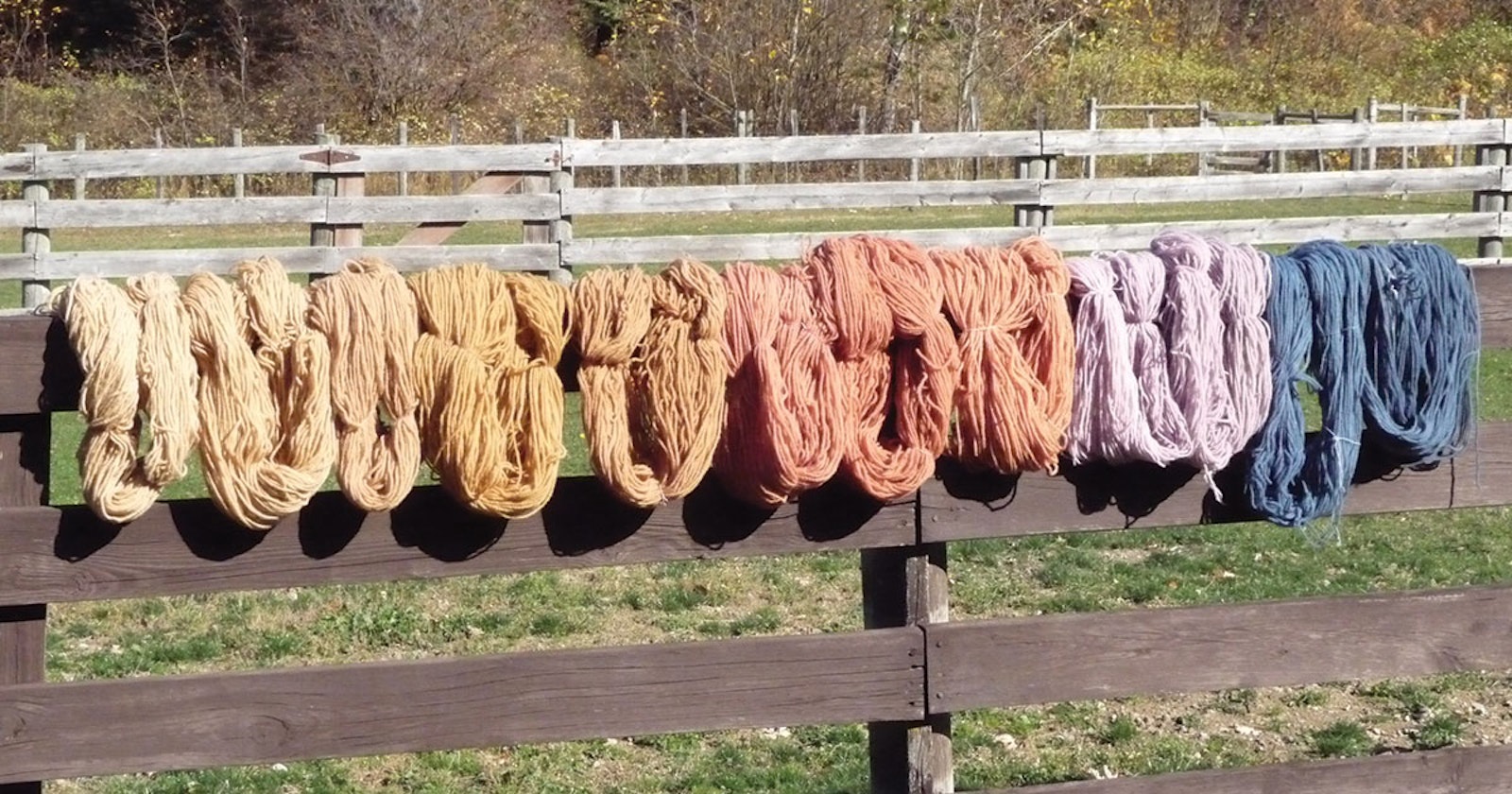Cooler temperatures and cleaning up the end-of-season garden inspire us to plan for next year’s growing season. Do your plans include a dyer’s garden? Some plants used for natural dyeing should come with a warning, and woad is one such plant. In this excerpt from Spin Off Summer 2018, contributor Gayle Vallance shares the basics about cultivating this problematic plant.
Woad (Isatis tinctoria) is a hardy member of the Brassicaceae (also called Cruciferae) family. It is easily cultivated in any reasonably temperate climate (zones 3 to 8), but it requires fertile soil and plenty of sunshine for greater dye production. It is a biennial, forming a rosette of leaves in its first year and a flowering stalk up to 4 feet (1.2 meters) tall in the second. The flowers produce thousands of seeds that detach easily when the pods turn purple. Seeds need only be collected every couple of years, since they store well in a jar or freezer. You can test seeds for potency by placing them onto wet paper; a violet color cast on the paper indicates a higher indigo content.
 A close-up of a woad plant. Photos by Gayle Vallance
A close-up of a woad plant. Photos by Gayle Vallance
Plant the seeds ½ to 1 inch deep when the soil is warm. They germinate in 10 days, and the plants should be thinned to 8 to 10 inches apart. Spread straw mulch between the rows to retain moisture and discourage weeds. You can harvest leaves every 3 to 4 weeks between June and August.
In North America, woad is considered a noxious weed, and therefore it must be controlled. A dyer should dig out the plants at the end of the first growing season, remove the spreading roots, and leave only one plant to produce seeds the following year. Pull seed stalks before the seeds are fully ripe and store them to ripen in a closed paper bag. Check local, state, and federal agricultural regulations before growing woad, which may be quarantined, prohibited, or targeted for eradication in your area.
—Gayle Vallance
Gayle Vallance earned a Master Spinner Certificate at Olds College, Level I of the Certificate of Excellence (Spinning) through the Handweavers Guild of America, and the basic level of the master weaver program through the Guild of Canadian Weavers. She teaches at conferences around North America.
Woad seeds can be purchased from www.wildcolours.co.uk or from www.richters.com in Canada. Richters cannot ship seeds to California, Idaho, or Montana in the United States or to Alberta, Canada. Consult your local extension office before attempting to grow woad. To read more about using woad for natural dyeing, download the Summer 2018 issue ofSpin Off. Plus to learn more about the ins and outs of natural dyeing, download a copy of our free eBook,Guide to Dyeing Yarn: Learn How to Dye Yarn Using Natural Dyeing Techniques, gathered from the pages of _Spin Off magazine.
Featured Image: Using both the indigo method and traditional dyeing methods brings an amazing array of colors from woad.

